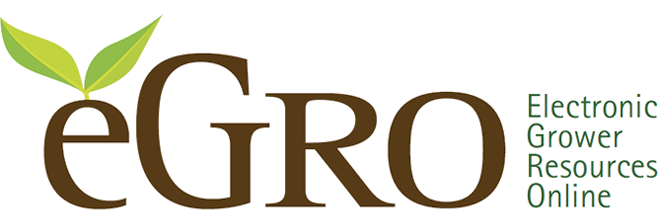Information
In-House Nutritional Monitoring
Fertilizer, substrates, and water are the basic fundamentals for growing plants. A plant nutrition management and monitoring program starts with knowing what is in the pot. In-house nutrient monitoring will provide you with key pH and EC information needed for a successful crop. If the substrate pH is too high, then interveinal chlorosis occurs. Lower leaf yellowing is the typical symptom that occurs if the substrate EC is too low. Careful monitoring of the substrate pH and EC will help to avoid nutrient disorders. Setting up a monitoring system is easy to do and the steps are highlighted here.
Database Basics
Names.
The database lists plants by Scientific name. While in greenhouse production, we tend to go rely on common names, this can lead to confusion about what specific plant is being discussed. Some of the common names are also provided as a reference.
pH Categories.
The optimal pH range for a plant varies. This is because some plants are susceptible to micronutrient accumulation in the foliage [primarily iron (Fe) or manganese (Mn)] when the substrate pH is too low (generally speaking below pH 5.5). Elevated levels of Fe and Mn can cause lower leaf damage. In addition, if the substrate pH is too high, it can tie up nutrients [primarily iron (Fe)] and result in yellowing between the veins of the younger foliage.
Therefore this database provides a customized listing of pH by plant species. They are grouped by: I – pH 4.5 to 5.5; II – pH 5.5 to 5.8; III – pH 5.8 to 6.2; IV – pH 6.0 to 6.5, and V – pH 6.5 to 7.0. Some species overlap one or more groups.
Fertilization and EC Categories.
The fertilization rates listed are for actively growing plants. Young plants will require lower rates (up to 50% lower). In general, at flowering many plants with terminal flowers also require lower fertilization rates (up to 50% lower). In addition, sub-irrigated plants will require 25 to 50% lower fertilization than the values listed. So make adjustments the fertilization levels provided to match your growing conditions.
This database provides fertilization groups as follows: Ultra Low - < 100 ppm N; Low 100 to 150 ppm N; Medium 150 to 200 ppm N; High 200 to 300 ppm N. Some species overlap one or more groups. The EC groups mirror the fertilization groups.
Extraction EC Ranges.
The EC ranges are listed for the four primary in-house extraction methods used. The optimal EC values are lower for the 1:2 Extraction method and highest for the PourThru method. This reflects the amount of water that is used in the testing procedures. The 1:2 extraction method and uses more water and the optimal EC ranges are therefore lower.
For more details on the three testing methods, please select an individual plant
The database was developed by Dr. Brian Whipker of North Carolina State University. Values are from published sources and based on research findings conducted at North Carolina State University.
Nutritional Monitoring
Content Author: Dr. Brian Whipker, North Carolina State University
Project Manager: W. Garrett Owen, The Ohio State University
